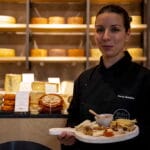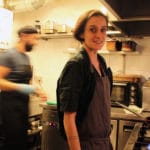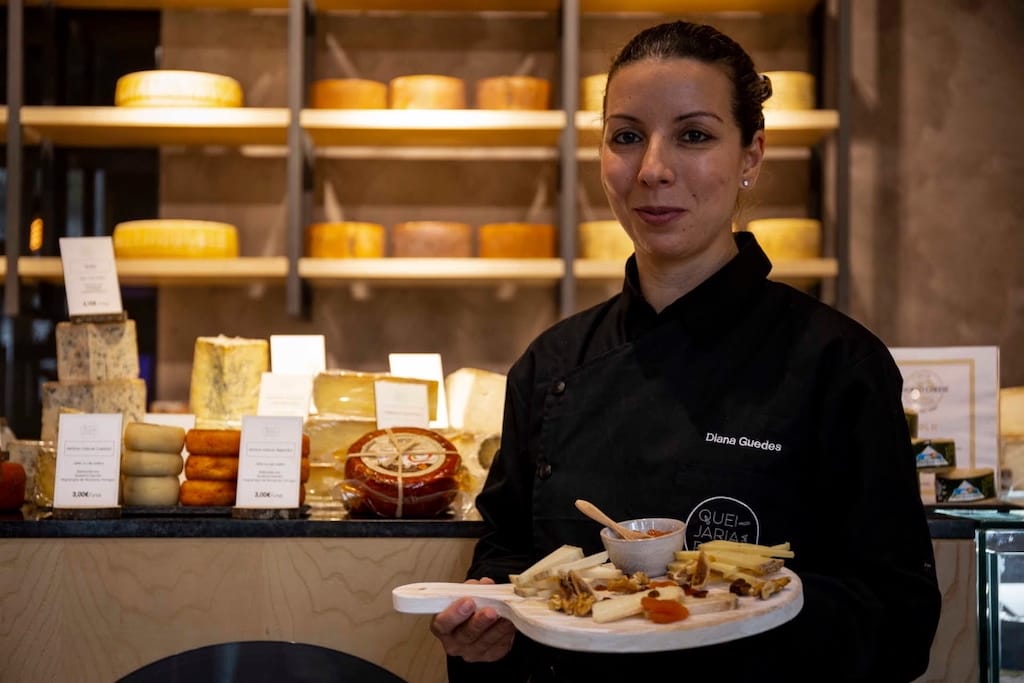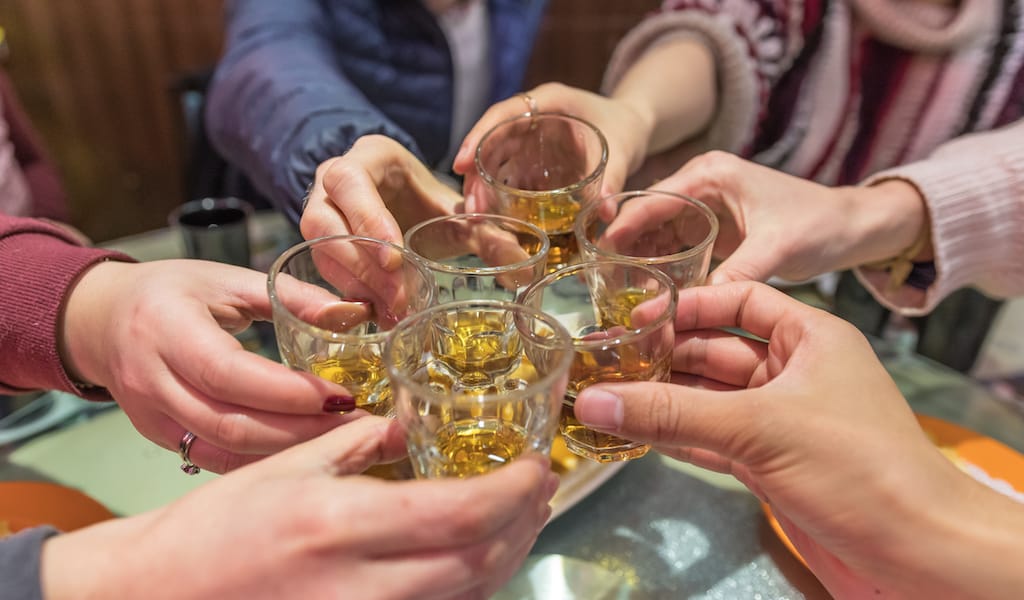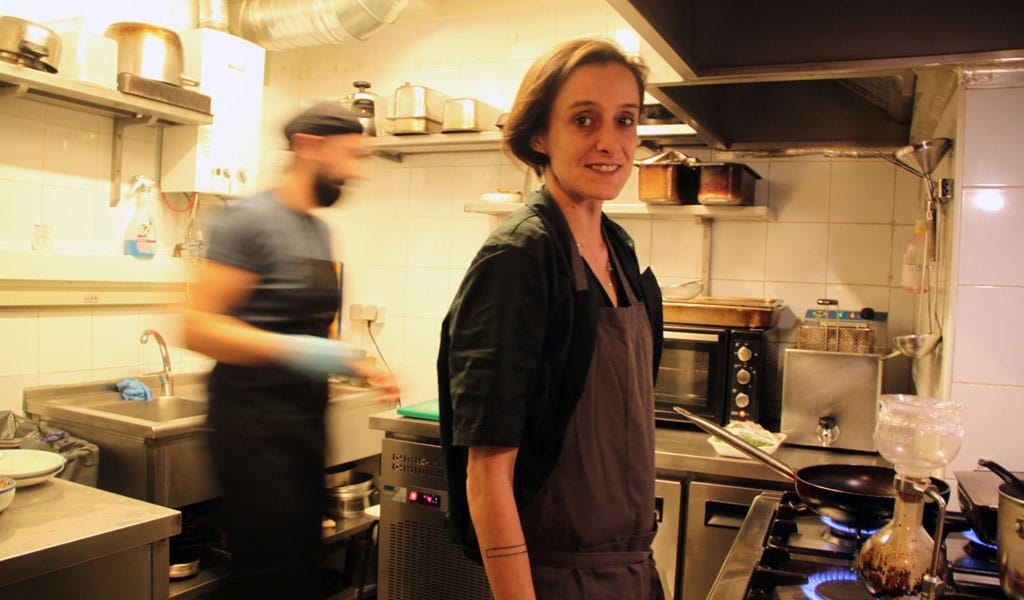Update: Poncelet is sadly no longer open.
Cheese has a very long, storied past in Catalonia, as we wrote in the previous parts of this series. But what do the present and future look like? Cheesemaking in the 21st century has flourished dramatically, thanks to increasing interest in and appreciation of culinary traditions and trends worldwide, not to mention the financial crisis of 2008, which led many people to make career changes or to take up a more DIY ethos. All of this, combined with that old Catalan inclination toward modern design and creativity, has made for a heady mix.
The new generation of cheesemakers comes from a wide range of professional backgrounds; many are college-educated and well-traveled, and accordingly, they have specific aesthetic, gastronomic and nutritional criteria. These artisans are open to constant evolution, internationally influenced, yet also grounded in local traditions and interested in improving the national market with new cheeses using organic, raw milk from animals pastured in the mountains and ultramodern technology for the best quality control.
The expert guiding us through this whirlwind tour of Catalan cheese history is Eva Vila, from La Teca de Vila Viniteca, a gourmet food shop/bar in El Born, which ages and sells more than 400 international and around 100 Catalan cheeses. Vila is one of the most important cheese specialists in Spain, and her influence on the domestic cheese market and production cannot be overstated.
In Part 2 of our series, Vila introduced us to Eulàlia Torras and her 1980s creation, the goat’s milk cheese Serrat Gros. In 2006 she retired and sold her farm, Can Codina, to the couple Raül Alcaraz and Mercè Lagrava, two Barcelonans who left city life for goats, mountains and milk buckets. They brought Serrat Gros and other Can Codina products even more renown, landing them on the menus of Michelin-starred restaurants, such as those of Carme Ruscalleda and Martín Berasategui, and in the international market as well.

At La Teca, Vila showed us the new wave of cheeses now being made. She explained how she and her team work with artisan producers to create innovative, unique cheeses, which then mature in the special cavas (caves) under the care of La Teca’s team. Maturation refines the flavors and textures of cheeses; the affineur’s job is to get cheeses to just the right point for consumption.
While we don’t have the space here to go into the 100-plus artisan Catalan cheeses and all the people involved in making them, what follows are a few of our favorites.
Biologist Paula Fonollà manages cheese production at Mas Reixagó, an old cattle farm now owned by the Grau family and converted wholly to dairying. One of their favorite cheeses is the raw cow’s milk Sant Ignasi, which has a soft rind and paste, with an almost liquid center, intense barnyard flavor, grassy notes and a lengthy finish. Mas Reixagó is also known for Blau de Jutglar, a creamy, spicy blue cheese also made from raw cow’s milk.
Mas d’Alba is a traditional 18th-century Catalan farmhouse that was restored and recently transformed into a hostel and dairy. There, the cheesemakers produce the aptly named Uff! – the perfect onomatopoeic expression for a stinky cheese. Made from raw goat’s milk, Uff! has a yielding consistency and medium intensity in flavor and is washed with an artisan blonde beer during its one-and-a-half-month maturation process.
In his former life, Salvador Maura I Rajó was an agronomic engineer, but at some point he realized that his fate was more linked to curds and whey than to managing rural development. He started the association of cheese artisans of the Pyrenees, and in 2001 he began producing his own cheese at Mas d’Eroles. He makes the wonderful raw cow’s milk Castellot, which has a brushed rind, compact interior and gentle persistence. We especially love his Brisat, also made from raw cow’s milk, whose rind is covered with grape pomace, which protects the cheese and lends it a subtle hint of wine and fruit.
Pablo García of La Balda has been making Fermió, another one of our favorites, since 2012, turning fresh milk from his neighbors in and around Sant Martin de Llémena into a simple soft cheese. He follows the traditions of the area – but with one eye on the French Saint-Marcellin. The result is elegant, full-bodied and delicious!
Poncelet is another Spanish company dedicated to aging – which they do in their own caves in Alcovendas – and selling wonderful artisanal cheeses. At the company’s Cheese Bar in Barcelona, customers can sample a full menu dedicated to their craft. [Editor’s note: We regret to report that the Poncelet Cheese Bar in Barcelona has closed.] Recently, in the company of one of their specialists, Alejandro Solozábal, we tasted 15 Catalan artisanal cheeses.
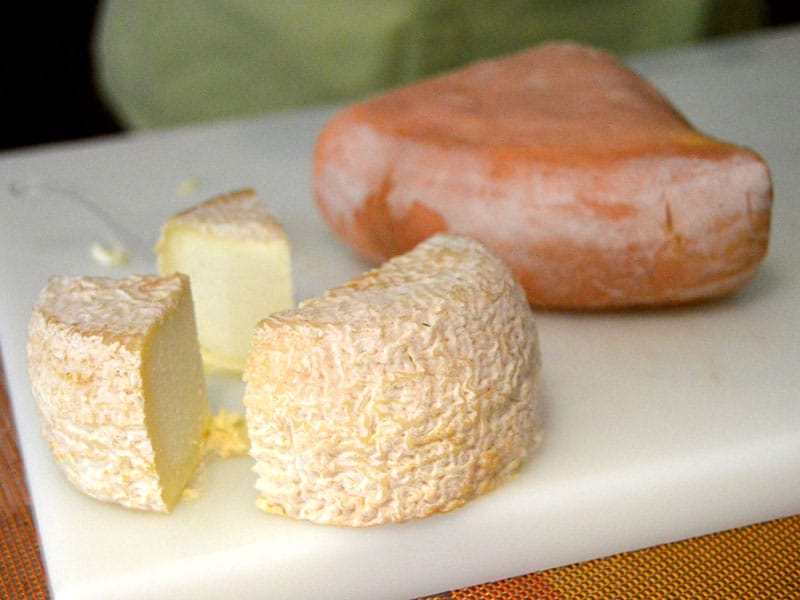
Among those we sampled was the raw cow’s milk Puigpedrós, which has a firm interior and concentrated nuttiness with floral notes. It’s produced in a former grain mill, called Molí de Ger, in La Cerdanya, which became first a cattle farm and then a dairy. Washed with brine, Puigpedrós has a distinctive orange rind.
At his family farm, Mas Marcè, in Siruana, L’Ampurdá, Manel Marcè produces Llanut, which means “woolly.” Each piece of cheese is covered in a bit of sheep’s wool for preservation and presentation and must be very carefully cleaned before being served. This cheese is made from the raw milk of Mas Marcè’s own sheep, as well as vegetable rennet, which results in a fresh, milky, barnyard flavor.
As Vila says, these national treasures offer glorious, inexpensive pleasures, especially if we compare them with the industrial cheeses in supermarkets. You can taste the purity, quality and experience in each, and knowing how much hard work went into them makes them taste all the more unforgettable.
Published on May 08, 2015
Related stories
February 14, 2023
PortoQueijaria da Praça sits in the Praça do Marquês neighborhood, in a cozy space where the temperature does not exceed 15ºC and the pungent aromas of cheese penetrate the nose as soon as one steps in. “When we opened, we wanted the store to be here,” owner Diana Guedes says. Far from the tourist areas…
March 4, 2019
ShanghaiLegend has it that huangjiu, or yellow wine, was invented by Du Kang, the god of Chinese alcohol. Because huangjiu is fermented, the Traditional Chinese Medicine (TCM) benefits of the drink are legion, and include “invigorating the blood.” You can see for yourself if that’s the case on our Night Eats tour in Shanghai.
May 22, 2017
LisbonThough it’s an age-old method for preservation and flavor enhancement all over the world, the smoking of meat, fish, and cheese is not a notable tradition in southern Europe. In Portugal, in the old days, salt curing was more common – particularly for the national staple, cod. However, the presence of smoking traditions in the…










































